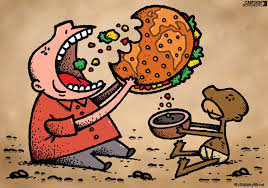NEWS
Six measures to fix consumption in Budget FY26
The six steps suggested by industry body CII include reduction in excise duty on fuel, cutting personal income tax rates for individuals and increasing daily wages under MGNREGS.
The six steps suggested by industry body CII include reduction in excise duty on fuel, cutting personal income tax rates for individuals and increasing daily wages under MGNREGS.

Fixing consumption is central to attracting private capital investment and quickening India’s economic growth. The Confederation of Indian Industry (CII) has suggested six measures the budget for 2025-26 could consider to boost consumption, including reduction in excise duty on fuel products, cutting personal income tax rates for individuals earning up to Rs 20 lakh per annum and increasing daily wages under Mahatma Gandhi National Rural Employment Scheme (MGNREGS) .
The other measures recommended are raising annual payout under PM Kisan, revising upwards the unit costs under the PMAY-G and PMAY-U schemes and introduction of consumption vouchers targeted at low-income group.
“Domestic consumption has been critical to India’s growth story, but inflationary pressures have somewhat eroded the purchasing power of consumers. Government interventions could focus on enhancing disposable incomes and stimulating spending to sustain economic momentum”, said Chandrajit Banerjee, director-general at CII.
The central excise duty alone accounts for approximately 21% of the retail price for petrol and 18% for diesel. Since May 2022, these duties have not been adjusted in line with the approximately 40% decrease in global crude prices. Lowering excise duty on fuel would help reduce overall inflation and increase disposable incomes,” the industry body said.
The reduction in marginal tax rates for personal income up to Rs 20 lakh per annum would help trigger the virtuous cycle of consumption, higher growth and higher tax revenue, the CII added.
While recent quarters have shown promising signs of recovery in rural consumption, targeted government interventions, such as increasing per unit benefit under its key schemes like MGNREGS, PM-KISAN and PMAY, and providing consumption vouchers to low-income households, can further enhance the rural recovery.
The government could consider increasing the daily minimum wage under the MGNREGS in the budget from Rs 267 to Rs 375, as suggested by the ‘Expert Committee on Fixing National Minimum Wage’ in 2017. According to CII, this would entail an additional expenditure of Rs 42,000 crore.
Raising the annual payout under the PM-KISAN scheme from Rs 6,000 to Rs 8,000 and increasing the unit costs under the PMAY-G and PMAY-U schemes, which have not been revised since scheme’s inception, would also boost consumption.
The CII suggested the introduction of consumption vouchers, targeted at low-income groups to stimulate demand for specified goods and services over a designated period.
The vouchers could be designed to be spent on designated items (specific goods and services) and could be valid for a designated time (like six-eight months), to ensure spending. The beneficiary criteria can be defined as Jan-Dhan account holders who are not beneficiaries of other welfare schemes.
Meanwhile, CII has suggested measures to boost bank deposits, which have been lagging behind credit growth. Pointing out that bank deposits as a proportion of a household’s financial assets have declined from 56.4% in FY20 to 45.2% in FY24, the CII, in its budget proposal, suggested taxing interest income from deposits at a lower rate and reducing the lock-in period for fixed deposits with preferential tax treatment from current five to three years.
